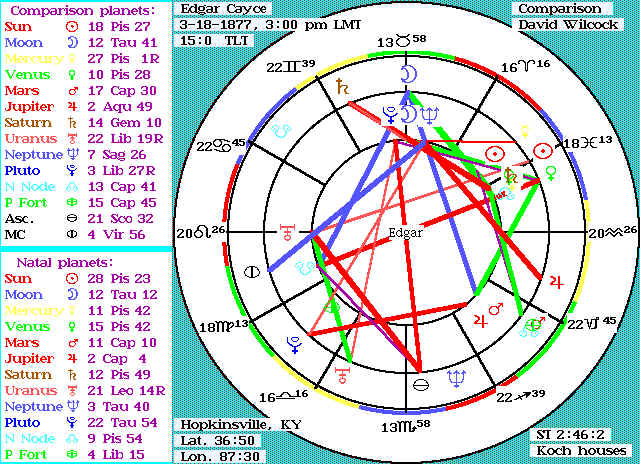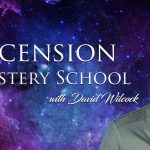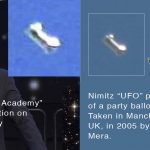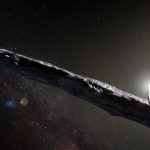AN ANALYSIS OF
ASTROLOGICAL SIMILARITIES BETWEEN
EDGAR CAYCE AND DAVID WILCOCK
12/18/98
[3/15/09: This is one of the first internet articles I ever wrote. It was published on larryhunter.com in December 1998, before I created my own website in February 1999.]
In this essay, we will explore the similarity between David Wilcock and Edgar Cayce, strictly from the perspective of the positions of the planets at the time of birth.
Other essays will touch upon various other avenues of proof, including “coded” material gleaned from David’s own readings well before he was actually told by the readings that this is who he was.
(Though David could not understand this coded material when it was presented, later analysis proved that many important hints were being dropped.)
The essay concludes by again stating that it ultimately does not matter who David was in a past life; the real test is for each person to read his readings and judge for themselves whether they produce a favorable, positive and enlightening reaction. And so, without further ado… let the analysis begin!
Time and time again, true astrologers have astounded millions by showing the amazing link between the innate personality characteristics of an individual and the relative positions of the planets at the time of said individual’s birth.
Nowhere is this more obvious than in the case of the Sun or zodiacal sign, which has been clearly shown to have a statistically significant impact on introversion /extroversion tendencies.
This was demonstrated by renowned psychologist Professor Hans Eysenck, the “father of the IQ test,” in collaboration with astrologer Jeff Mayo. The level of correlation that they discovered, from a very large subject pool, was 10,000 to 1.
The book “Mayan Prophecies” by Adrian Gilbert and Maurice Cotterell provides this example in its text, and makes great strides in illustrating a Sun-based, physical explanation for why astrology works. [This topic is touched upon in more detail in David’s online book, “The 1999 Cycle,” located at www.greatdreams.com/]
The question of whether reincarnation exists or not is outside the scope of this present essay. Many fine works have examined this same topic and come up with fantastic correspondences, including young children who are successfully able to recall names, places and events that they should otherwise not be able to have access to.
“Children’s Past Lives” by Carol Bowman is an excellent resource here, as well as “The Enigma of Reincarnation” by Brad Stieger. The official Edgar Cayce book that hones in on the topic of reincarnation is “Many Mansions” by Gina Cerminara.
Another informative book on the topic of reincarnation is entitled “Edward Bellamy Writes Again,” by Joseph Myers. This book details the story of a modern author who has complete recall of a past life as famous author Edward Bellamy. On the cover of this book, a comparison photo is given, and the resemblance is quite striking.
We continue with our discussion under the widely accepted postulate of the reality of reincarnation. Works such as Edward Bellamy suggest that there should be many similarities between an entity’s various lives, including facial similarities.
Now, with the case of David Wilcock and Edgar Cayce, we have yet another opportunity to explore this matter further, through astrology. The facial similarities between Wilcock and Cayce at the same age of maturity are very obvious to all who see them, and David has verified this with several experienced portrait artists whose business is to study and duplicate the likeness of the human face.
(There are no major discrepancies between the two, other than the fact that Cayce’s face is slightly rounder and the jawbone more recessive.)
What is interesting in this case is that we also have an opportunity to make an exact comparison between the natal astrological data of the two individuals.
The comparison data, then, is Edgar Cayce at 3/18/1877, Hopkinsville, KY, at 3:00 p.m., against David Wilcock at 3/8/1973, Schenectady, NY at 11:16 p.m.
The standard Koch system of house placement was utilized in rendering the charts, and a bi-wheel comparison chart was made with Cayce in the center and Wilcock on the outside. The software program utilized to make the comparison was Time Passages ver. 2.52, by Henry Seltzer, Astro Graph Software, Inc., (408) 425-3686.
When considering the two charts, amazing parallels begin to jump out. The most noticeable of these is the remarkable closeness of the inner planets, astrologically related to the physical-based attributes of personality. Table 1 is a breakdown of the relative placements of the planets in each chart, as well as their degree of variance:
Planet Name Cayce Placement Wilcock Placement Degrees Variance Sun 28 Pis 23 18 Pis 27 10′ 4″ Mercury 11 Pis 42 27 Pis 1 R 16′ 41″ Venus 15 Pis 42 10 Pis 28 05′ 14″ Mars 11 Cap 10 17 Cap 30 06′ 20″ Moon 12 Tau 12 12 Tau 41 00′ 29″
Table 1. Similarities between Cayce/Wilcock natal planetary positions — Inner Planets Only.
Secondly, one can examine the placements of the outer planets, and again see a surprising correlation between them of a different sort. The outer planets have more to do with the spiritual aspects of an individual’s personality, and all astrologers agree that Wilcock and Cayce have “very different missions” on the planet.
Cayce’s main focus was on doing medical readings, and Wilcock’s readings are much more focused on the notion of an upcoming Ascension and of the imminent necessity to prepare for said event.
Planet Name Cayce Placement Wilcock Placement Degrees Variance Jupiter 02 Cap 4 02 Aqu 49 30′ 44″ Saturn 12 Pis 49 14 Gem 10 92′ 39″ Uranus 21 Leo 14 R 22 Lib 19 R 61′ 05″ Neptune 03 Tau 40 07 Sag 26 154′ 46″ Table 2. Similarities between Cayce/Wilcock natal planetary positions — Outer Planets Except Pluto.
As anyone can see from the above data in Table 1, the correspondence between the inner planets is astounding. In both charts, the inner planets are remarkably positioned in almost the exact same places. The widest variance is with Mercury, at 16 degrees 41 minutes.
However, this is still only a 1 out of 24 chance. The average variance in degrees comes out to 7′ 45”. This is obviously statistically significant for five planets, each of which could be located at any point within the 360 degrees.
The remarkable precision of the Moon’s placement is the most striking of all, being less than half a degree offset between the two charts.
The major outer planets, namely Jupiter, Saturn, Uranus and Neptune, are also related in interesting ways. The two positions of Jupiter are only 44 minutes of a degree away from being exactly 30 degrees apart.
The two positions of Uranus are only 1 degree 5 minutes away from being exactly 60 degrees apart. The variance between the positions of Saturn is only 2 degrees 39 minutes away from being exactly 90 degrees. Lastly, only 4 degrees 46 minutes separate the positions of Neptune from being 150 degrees apart.
Let us explore this a bit further. For the sake of simplicity, all astrologers divide the heavens into 12 units of 30 degrees each. Therefore, the measurement for any planet will be quoted as some number of degrees between 0 and 30, which is then matched with the appropriate sign of the zodiac, indicating which of the 12 segments the planet resides within.
Astrologers measure aspects or “conjunctions” based on the closeness of these degree values and the angle measurement involved, whether 30, 60, 90, 120, et cetera.
Quite astonishingly, the average variance in the local 30-degree area measurements between Jupiter, Saturn, Uranus and Neptune is only 2 degrees 18 minutes! The 30-degree Jupiter aspect, known as a trine, is only off by 44 minutes of a degree. This is highly interesting and only strengthens the case of similarity between the two birth charts.
The only planet left to consider at this point is Pluto. There is no apparent correlation between the two positions, as Cayce’s Pluto is at 22 Tau 54 and Wilcock’s is at 3 Lib 27 R. [The R meansthat the planet was traveling in retrograde motion.]
The degree variance between the two planet positions here is 139 degrees 27 minutes, not close enough to any measurement to be construed as a conjunction or aspect. Therefore, Pluto appears to break the pattern, not falling into any significant alignment. We will see soon enough how the Pluto of each chart does make significant aspects to the other.
One possibility for why the Plutonian positions seem to break from the pattern is the fact that Pluto is by far the slowest-moving planet in the Solar System. Given the fact that the death of Cayce was in 1945 and the birth of Wilcock in 1973, there was a rather short window of time to work with.
Wilcock would need to be aged enough to fulfill the prophecy stated in Cayce’s readings for symbolically “returning” in 1998. [Wilcock was actually informed of his identity ahead of schedule, on Nov. 27, 1997.]
Cayce’s Pluto turns out to be in direct opposition, 180 degrees apart, from the point where the sun rises in David’s chart, known as the Ascendant. The Ascendant is considered highly by all astrologers. The difference is only one degree, 22 minutes, again a very strong connection.
David’s Pluto is one degree, 23 minutes away from being precisely 90 degrees offset from Cayce’s Jupiter. [Notice that both variances in these two aspects are only one minute of a degree different from each other-1′ 22″ and 1′ 23″.]
The 90-degree relationship is known as a square, and is read as being inharmonious. The 180-degree direct opposition is also read as being inharmonious.
Therefore, there is bound to be some friction between these two personalities at a deep level; Pluto is the “deepest” planet in the heavens, concerning the far reaches of the subconscious, touching on issues such as death and containing all the “hidden secrets” in an entity’s personality.
So we obviously have two charts with tremendous correlations between them. If our hypothesis is correct, the forces involved with Edgar Cayce needed to produce another planetary alignment that was significant enough to meet our presumed standards for reincarnation. These standards assume that there would be major similarities in personality, and therefore major astrological connections as well.
By this fact alone, one could make the following conclusion. Within our model of reincarnation as we have outlined it, Cayce would need to come back at a date very close to his original birthday, March 18th. If this was not done, the Sun sign would be different, and the new entity would no longer be a Pisces.
That means that there is a maximum of only 30 days each year where the birth could take place. David’s birthday of March 8th is only ten days away from Cayce’s, and so that satisfies the model.
We could assume that Cayce would desire to come back at a date that would insure that he would be old enough to fulfill his duties in 1998.
Therefore, 1973 could almost be seen as the upper limit for a birthday, giving the new person a chance to become established as an adult before 1998, when they would turn 25. Cayce himself had his first major psychic experiences at age 23, the same age that Wilcock officially started his own connection. Cayce did not actually begin doing readings professionally for another ten years.
Furthermore, Cayce’s own readings corroborate many other sources of information by saying that it is not uncommon for there to be a rest period in between incarnations. In the book Many Lives, Many Masters, it is stated that the upper limit of years between incarnations usually does not exceed 200.
This topic is also covered in the channeled work “Seth Speaks” by Jane Roberts, wherein Seth says that only in extremely urgent cases such as abrupt death, suicide or other vital unfinished business on Earth does a person return with great speed, such as a few days, weeks or months.
So, if we give Cayce a “normal” batch of years to rest from the Earth planes in between incarnations, the birthdate of March 8, 1973 is perhaps the single best date for such a reincarnation to occur.
Many time cycles have to converge in order for the inner planets to assemble as closely as they did, and then with the addition of the aspects in the outer planets, the convergence is even greater. It is also interesting to point out that Cayce and Wilcock’s birth years were just about 100 years apart — 1877 to 1973.
Ultimately, no one can produce the “final word” on reincarnation in a manner that is significant enough to convince the skeptics and naysayers. There is a great deal of supportive ideological material that needs to be in place for a person to have a foundation for understanding.
The material for this foundation is spiritual in nature, and thus it does ultimately boil down to a question of faith, something that must come to each person individually. What can happen is that people can validate for themselves, on an experiential level, that such an event as their own reincarnation might have taken place.
The work of Robert Monroe could be the most promising avenue to providing people with the means to produce such a validation. Monroe has designed an audio-based system known as Hemi-Sync that produces valuable changes in the brain-wave patterns of its participants.
These perceptual changes often lead to the state commonly referred to as an out-of-body experience. A tone is played in the left ear, and a separate tone of a slightly higher or lower pitch is played in the right. The brain tries to resolve the difference between the two tones, and this creates a “beat pattern” of oscillations in the brainwaves.
The frequency of these oscillations can be used to elicit alpha, beta, delta and even theta states, and can be done so that the person is consciously aware as these states are entered. As many of these states are identical to those seen in dreams, the person can essentially have a conscious dream, or an OBE.
In this field of research, many individuals have gained what they feel to be compelling evidence on a direct experiential level for their own past lives. The Monroe Institute works diligently to try to correlate people’s observations to historical facts, and has met with repeated success in these areas [see Monroe’s books “Far Journeys” and “Ultimate Journey” for more information.]
Wilcock has also had several vivid, conscious OBE experiences where different past lives were relived, including events from Cayce’s lifetime. And thus, the proof is out there, it simply has to be gained through personal effort and willingness to stick to a disciplined program, such as meditation and inner seeking, dream recall, lucid dream and OBE exercises, or a more physical tool such as the Monroe tapes.
Wilcock has stated repeatedly that his ultimate value comes down to the simple fact of his being another perfect microcosm of the One, just like everyone else. What matters most is the individual’s personal reaction to his readings, not who he was in a past life.
After all, Cayce was famed for his accuracy and immense spiritual depth, and the name recognition sprung directly out of the quality of the work. Wilcock’s readings also have demonstrated repeated prophetic accuracy, and have spiritually inspired many people with their beauty.
It really doesn’t matter who Wilcock was, if anyone, in a past life. The vibrational / astrological similarity of Wilcock to Cayce illustrates clearly that both souls are part of a remarkable team effort, originating from a very similar source for a very similar purpose; “To Make Manifest the Light of God In Man.”
—-Completed Friday, December 18, 1998 by David Wilcock—-





![DECLAS: Social Media Nukes An Entire Generation… But Why? [Free Ebook!]](https://divinecosmos.com/wp-content/uploads/2019/06/DECLAS_TT-150x150.jpg)











I’d like to have my astrological chart drawn up for reasons that are curious to me. Where can I get one that is done in the reputable manner of Edgar’s and David’s? Moderator, feel free to email me if you wish. Thanks so much for reading this and have a great day now!
I’m interested in 2 conflicting statements in the comments I read
#5 Debra Dee Freeman 2017-09-04
says Halaliel is a “messenger of The Most High” and a “leader of the heavenly host”, meaning a very good Archangel of God. Several Readings before that say the same thing, even that Halaliel is the Archangel assigned to oversee the Edgar Cayce Readings.
and this opposing view
[Moderator: when Edgar Cayce neared the end of his life, he was working himself to death, and due to his lowered vibrational state, there was a negative entity that came through some of his channeling called “Hellalial”
Obviously I will do my own research but would love to hear from others on this?!
I would also appreciate some guidance on how to check the similarities on these astrological charts – how to start? Thanks .. fascinating article!
[Moderator: It is widely known at the ARE Headquarters in Virginia Beach that Halaliel was a “trickster entity” that was negative, masquerading as positive. This is where the flawed prophecies of California sinking into the ocean in 1998 came from. Cayce’s own readings later applauded the group for realizing what was going on and deciding not to work with this entity anymore.]
To Moderator: “It is widely known at the ARE Headquarters”? How about just using the CD Rom or a Reading Search at edgarcyce.org to read every instance the name Halaliel is found in the Readings. Anyone who does this will see that the Readings highly praise Halaliel, and say that Halaliel is the archangel assigned to oversee Edgar’s Reading Work, and is always present at every Reading, and was inappropriately mixed up with a Reading that talked about a messenger that would present themself to seekers IN THE FUTURE and which messenger should be honored. This was talking about an actual human being, and some hysterically decided it was an entity to appear in the Readings, specifically the one that already appeared, i.e. Halaliel. Again, just read all mentions of Halaliel, and one will see he is not a “trickster”, and well as that they mixed him up with the forthcoming messenger / representative / forerunner of Jesus’ return: Beloved John reincarnate. P.S. ARE Headquarters are into Eastern Thought, Channeled Materials, Pop Philosophies, and whatever other anti-Reading/anti-Bible junk there is. You won’t find correct information regarding theology, prophecy, Halaliel, unless you read the Readings yourself.
There is a total of 18 Readings that mention Halaliel at least once, but most such mentions are either notations of Gladys Davis in brackets or else people asking a question; it is only a few times that the Readings mention Halaliel without a question being asked. And as anyone can see by reading all of these mentions, especially the latter ones not a single negative statement made by people about Halaliel has ever been true, and Halaliel has been maligned erroneously. Here are two links that have those 18 cites, which are two articles written by myself Debra Dee Freeman. The first article has 17 of the cites; the second article has the 1 other cite. 1. https://groups.google.com/forum/#!topic/are-edgar-cayce-website-members-only-discussion-forum/LLl-yMLcjuo; 2. https://groups.google.com/forum/#!topic/are-edgar-cayce-website-members-only-discussion-forum/xwgcC-bL0Bs.
There is a reason that the years are 96 years apart,it lines up with so much more than just this chart in so much detail it would blow a persons mind how close they really are. It is too bad that this time has now past
Re Moderator’s negative Comment re Edgar Cayce Reading Halaliel and Earth Change prophecies:
1. Reading 254-83 (February 1935), well before Edgar’s exhaustion stroke death, & the last Reading to mention Halaliel, says Halaliel is a “messenger of The Most High” and a “leader of the heavenly host”, meaning a very good Archangel of God. Several Readings before that say the same thing, even that Halaliel is the Archangel assigned to oversee the Edgar Cayce Readings. Also, Reading 3976-15 (January 1934) is the only Reading with Earth change prophecies that Halaliel is a part of.
2. The Earth Change prophecies are not wrong, but the date given misunderstood or else incorrect because the question was asked incorrectly or else a question was asked which should not have been asked. Reading accuracy depended on proper question correctly asked. As far as future, should only ask, What might happen? or, What probably will happen? Alas, Hugh Lynn asked, What WILL happen?
I love studying the patterns and cycles of life. The similarities in the photographs and western astrological natal charts of Edgar Cayce and David Wilcock are not only remarkable but the year of birth for both of them (1877 & 1973) actually falls in the Chinese year of the “Ox” – the 12 Chinese zodiac animal signs occur every 12 years. What are the chances of David reincarnating in the same chinese zodiac year – very interesting!
Also I have a theory that Edgar Cayce’s Life Path/Destiny number (8) is now the birthdate of David (which is what he expresses in this life) and with his current Life Path/Destiny number (4) (building strong foundations for the world) David expresses his gifts beautifully.
Fascinating! I am investigating the possibility that I could be a reincarnation of my father’s mother, and this essay was helpful in knowing what to look for in the charts (direct correlations, 90 degree and 180 degree relationships). It’s difficult to find such specific and practical information online. And, of course, as a long time fan of David, I loved reading this piece! Thank you, as always.
The two charts are interesting in their inner planet similarities.It would be very interesting to examine both Jyotish charts. And the death chart in Jyotish of Edgar Cayce.
I do not concur with Bellamy’s theory. on physical characteristics. We have all had so many incarnations in different ages, countries, religions it is not possible to arrive at the conclusion we always have similarities that are physically apparent. What is most important in the final analysis is that David Wilcocks sincerity and motivation for helping humanity . his research into truth and his capability to enhance human understanding cannot be corrupted .
I have watched several of David’s videos and was curious. I wonder how he reconciles saying on the one hand he doesn’t believe in those predictions regarding major Earth Changes such as California becoming submerged in the ocean or he wouldn’t live in LA; and believing he is the reincarnation of Edgar Cayce who drew maps of those kinds of Earth Changes based on his readings.
[Moderator: That is a good question, and if you want to be technical about it, this is why… when Edgar Cayce neared the end of his life, he was working himself to death, and due to his lowered vibrational state, there was a negative entity that came through some of his channeling called “Hellalial” (not sure of spelling?). Apparently, it identifies its name in those readings as such, and that was where the earth change readings came from, which would make sense why those in particular ended up being false predictions.]